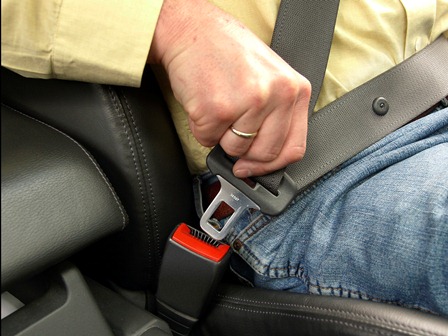ITD announces statewide seat belt enforcement
Published at | Updated at
The following is a news release from the Idaho Transportation Department.
BOISE – Taking three seconds to buckle up before driving or riding in a vehicle could mean the difference between life and death.
That’s why the Office of Highway Safety is partnering with local law enforcement agencies to patrol for those not using safety restraints across Idaho. The mobilization will run from July 25 to Aug. 7, 2020.
“Our goal is to have everyone buckle up, every time,” said John Tomlinson, Office of Highway Safety manager. “Seat belts are proven to be the most effective safety feature ever introduced for vehicles. They cut in half the likelihood of fatal and serious injuries from traffic crashes.”
Safety restraints are not optional. Idaho law requires that everyone in a vehicle be properly restrained. In the last five years, from 2015-2019, 56% of vehicle occupants killed in Idaho were not restrained and 1,207 unrestrained vehicle occupants were critically injured in traffic crashes.
“This mobilization effort isn’t just about handing out citations,” said Tomlinson. “These efforts are to keep drivers and passengers safe. When you choose not to wear your seat belt, or when you allow your passengers to ride with you unrestrained, you increase the risk of serious injury or death.”
According to the National Highway Traffic Safety Administration (NHTSA), several misconceptions about safety restraints still persist.
- Vehicle type: there seems to be a misconception among those who drive and ride in pickup trucks that their large vehicles will protect them better than other vehicles would in a crash. The numbers say otherwise: 59% of pickup truck occupants who were killed in 2018 were not buckled. That’s compared to 42% of passenger car occupants who were not wearing seat belts when they were killed. Regardless of vehicle type, seat belt use is the single most effective way to stay alive in a crash.
- Seating position: too many people wrongly believe they are safe in the back seat unrestrained. Of front-seat passsenger occupants killed in crashes in 2018, 46% were unrestrained, while 56% of those killed in back seats were unrestrained.
- Rural versus urban locations: people who live in rural areas might believe that their crash exposure is lower, but in 2018, there were 12,068 passenger vehicle fatalities in rural locations, compared to 10,330 fatalities in urban locations. Out of those fatalities, 49% of those killed in the rural locations were not wearing their seat belts, compared to 45% in urban locations.
“No matter where you live, what you drive, or where you sit, make buckling up a habit,” said Tomlinson.


